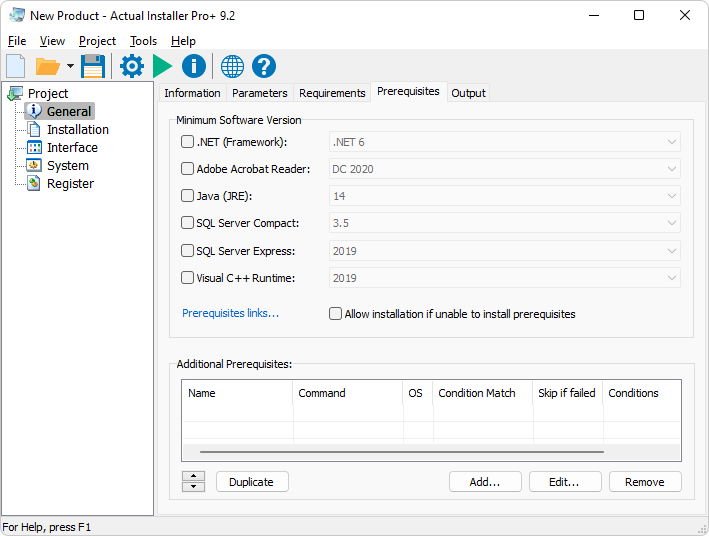Actual Updater can be integrated in any Windows software, no matter what installer you use for the distribution.
But you can simplify the whole process of the program distribution if you use our installation system, Actual Installer, as it has the built-in update features.
Welcome to Actual Tools Support Center! Here you can get some additional information regarding our products. Here you can get some additional information regarding our products. Please, select the required from the following options. Windows Installer is attempting to install an app that is already installed on your PC. The folder that you are trying to install the Windows Installer package to is encrypted. The drive that contains the folder that you are trying to install the Windows Installer package to is accessed as a substitute drive. Actual Installer is a program to create professional install packages for user-designed software. With just a few clicks, you can create a small application to serve as a pathway between your software.
Just select the option 'Include Actual Updater tool' and use its features. Read how to use the updater.
Actual Installer 8.1 Release. Actual Installer version 8.1 was released on December 09, 2020. What's new: Improved: Interface Enhancements; Press Ctrl + L to open License Agreement in Modern interface;; Check if Product Name doesn't contain forbidden characters in Windows /:.? ' (to avoid issues with creating files/folders that contain Product Name).
You don't have to create the 'Updater.ini' file as the setup program uses for the update purpose the file 'Uninstall.ini', which is created during installation.
Just make sure that the option 'Include Uninstaller' is selected on the page 'Installation Uninstallation'.
And you don't have to copy the file 'Updater.exe' into your app's main folder as it will be automatically installed with your program during installation.
When using the feature 'Automatically Check for Updates (on Windows startup, Daily, Weekly, Monthly)' you Don't need to initialize this feature (using the switch /Init). All necessary actions will be done automatically during the installation of you app.
Install Jest using yarn:
Or npm:
Note: Jest documentation uses yarn commands, but npm will also work. You can compare yarn and npm commands in the yarn docs, here.
Let's get started by writing a test for a hypothetical function that adds two numbers. First, create a sum.js file:
Then, create a file named sum.test.js. This will contain our actual test:
Add the following section to your package.json:
Finally, run yarn test or npm run test and Jest will print this message:
You just successfully wrote your first test using Jest!
This test used expect and toBe to test that two values were exactly identical. To learn about the other things that Jest can test, see Using Matchers.
Running from command line
You can run Jest directly from the CLI (if it's globally available in your PATH, e.g. by yarn global add jest or npm install jest --global) with a variety of useful options.

Here's how to run Jest on files matching my-test, using config.json as a configuration file and display a native OS notification after the run:
If you'd like to learn more about running jest through the command line, take a look at the Jest CLI Options page.
Additional Configuration
Generate a basic configuration file
Actual Installer Download
Based on your project, Jest will ask you a few questions and will create a basic configuration file with a short description for each option:
Using Babel
To use Babel, install required dependencies via yarn:
Configure Babel to target your current version of Node by creating a babel.config.js file in the root of your project:
The ideal configuration for Babel will depend on your project. See Babel's docs for more details.
Jest will set process.env.NODE_ENV to 'test' if it's not set to something else. You can use that in your configuration to conditionally setup only the compilation needed for Jest, e.g.
Note: babel-jest is automatically installed when installing Jest and will automatically transform files if a babel configuration exists in your project. To avoid this behavior, you can explicitly reset the transform configuration option:
Jest 24 dropped support for Babel 6. We highly recommend you to upgrade to Babel 7, which is actively maintained. However, if you cannot upgrade to Babel 7, either keep using Jest 23 or upgrade to Jest 24 with babel-jest locked at version 23, like in the example below:
While we generally recommend using the same version of every Jest package, this workaround will allow you to continue using the latest version of Jest with Babel 6 for now.
Using webpack
Jest can be used in projects that use webpack to manage assets, styles, and compilation. webpack does offer some unique challenges over other tools. Refer to the webpack guide to get started.
Using parcel
Actual Installer Pro
Jest can be used in projects that use parcel-bundler to manage assets, styles, and compilation similar to webpack. Parcel requires zero configuration. Refer to the official docs to get started.
Using TypeScript
Jest supports TypeScript, via Babel. First, make sure you followed the instructions on using Babel above. Next, install the @babel/preset-typescript via yarn:
Then add @babel/preset-typescript to the list of presets in your babel.config.js.
Actual Installer Review
However, there are some caveats to using TypeScript with Babel. Because TypeScript support in Babel is purely transpilation, Jest will not type-check your tests as they are run. If you want that, you can use ts-jest instead, or just run the TypeScript compiler tsc separately (or as part of your build process).
You may also want to install the @types/jest module for the version of Jest you're using. This will help provide full typing when writing your tests with TypeScript.
For @types/* modules it's recommended to try to match the version of the associated module. For example, if you are using 26.4.0 of jest then using 26.4.x of @types/jest is ideal. In general, try to match the major (26) and minor (4) version as closely as possible.
